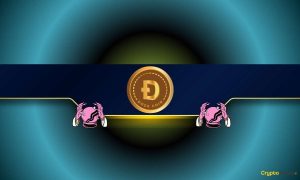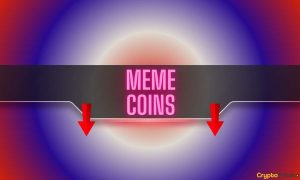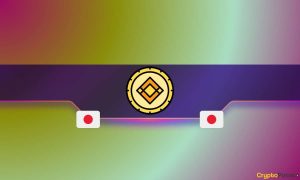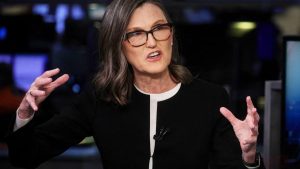How do you DAO? Can DAOs scale and other burning questions – Cointelegraph Magazine
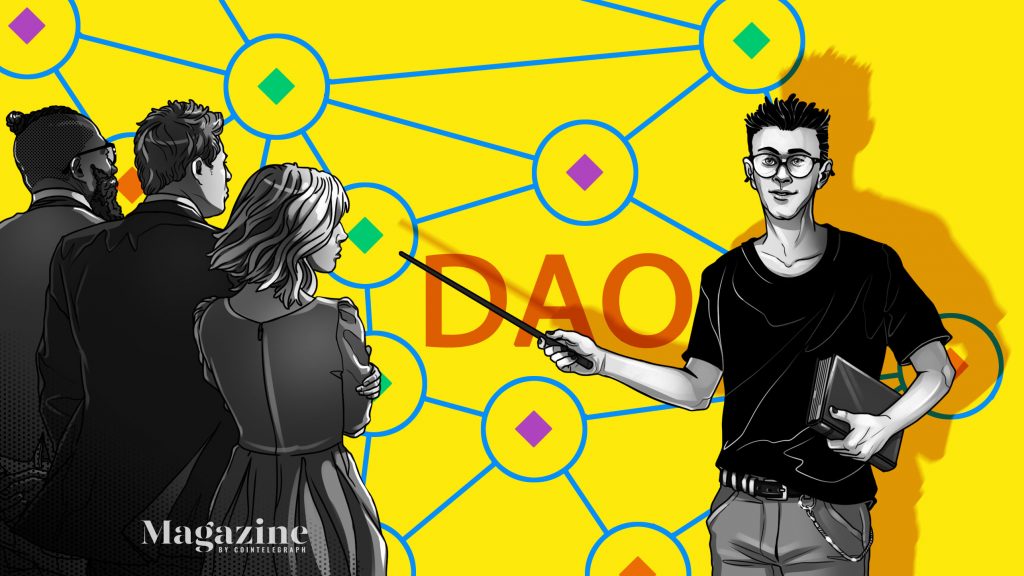
DAO: Decentralized. Autonomous. Organization.
“The whole phrase is a misnomer. They’re not decentralized, not autonomous and they are not organizations,” Monsterplay blockchain consultancy founder David Freuden tells Magazine.
Freuden co-authored a 51-page report on DAOs in May 2020 in an attempt to help realize their potential. “We need DAOs,” he explains. “The idea of ‘shareholder first’ is only a 1980s/1990s concept. Companies became about profits, not products.”
He foresaw big things for DAOs and much has changed nearly two years later. By the end of 2021, DAOs had more than 1.6 million participants, up from just 13,000 at the start of the previous year. In 2021, the US state of Wyoming legislated for legal recognition of DAOs and the Marshall Islands. In 2022, Australia is considering doing the same.
Yeah, but what is a DAO?
In short, a DAO is a governance model popularized in the decentralized finance sector where members buy (or are rewarded with) governance tokens to vote on how the DAO operates and spends its money. “DAOs were born from DeFi as an investment vehicle. So, you can’t separate a DAO from tokenomics,” says Freuden.
DAOs are usually built around a mission which can be a promise or a social cause but usually still involves a desire for profits. “If you can’t answer the why the DAO won’t be sustainable,” he says. And, “if you don’t have tokenomics, it’s a co-op, not a DAO.”
DAOs come in a range of types that now include operating system DAOs, protocol DAOs, investment DAOs, grant DAOs, service DAOs, social DAOs, collector DAOs and media DAOs.
The idea that people could be galvanized around a good cause was very attractive to Freuden. The crypto world comprises “speculators or builders,” so “crypto needs a DAO for the builders.”
But, one problem is that mismatched expectations among speculators and builders — or both — cause endless but, sometimes creative, friction.
Productivity coordination organisms
For DAOs, the idea is usually to launch the DAO with an original product, such as a cryptocurrency, an IT protocol or a VC-like investment fund like FlamingoDAO. DAOs allow for tokenized and incentivized distributed open-source contributions without borders. Product or mission is key. Sometimes, this happens in reverse and DAOs emerge once a product is launched, leaving the company to eventually transition to a DAO, like Uniswap eventually did.
A well-coordinated DAO can get things done. So, it’s a vehicle for a distributed incentivized workforce. Essentially, DAOs are something like productivity coordination organisms.
DAOs incentivize merit-based contributions. Those who “work for the DAO make permissionless contributions and enjoy fragmented employment benefiting from task descriptions, not job descriptions,” argues Freuden. So, DAOs are, above all else, a new way of organizing cooperation.
DAO? Distributed not decentralized
In decentralized autonomous organizations, each word can be interpreted differently. DAOs can emphasize one aspect or at the expense of another. Decentralization is a trade-off for autonomy and vice-versa.
Matan Field, CEO at DAOstack, has long argued that a DAO is a distributed governance system. Power is distributed collectively. Yet, the decentralized aspects of a DAO can be understood by two different factors. This sheds light on the conflicting definitions of a DAO.
A DAO can be decentralized because it runs on a decentralized infrastructure. For example, it could be created on a public permissionless blockchain so that another party cannot take over.
A DAO is distributed because it’s not organized hierarchically around executives or shareholders. There is no concentration of power around its leadership.
Option two is clearly distributed rather than decentralized.
Yet, not all of these endeavors are “automated.”
Autonomous: Think quorum, not robot
Think of a quorum rather than a robot. DAOs can be autonomous in the sense that the most profound characteristics of a smart contract are self-enforcing and self-executory capabilities. Thus, every transaction on a blockchain is technically a simplified version of a smart contract.

For example, keep in mind how smart contracts work on the Ethereum network. They are less like legal contracts and more like lines of self-executing computer code described as “persistent scripts” by Vitalik Buterin.
A DAO, however, is autonomous in the sense that its rules are self-enforced once agreed upon by its members. So, a DAO is not fully automated but “automated upon approval by the governance committee.” This can differentiate them from traditional organizations whose rules form guidelines that someone must interpret and apply.
Why a DAO? They move fast
A DAO can adapt quickly to local conditions as a quick way to spin up a governance mechanism. It’s a knowledge coordination tool to make decisions collectively and fast.
Like UkraineDAO, spun up rapidly by Ukrainian expat Alona Shevchenko, Nadya Tolokonnikova, founder of Russian feminist punk band Pussy Riot, artist Trippy Labs and digital artist collective PleasrDAO, in response to Putin’s invasion of Ukraine. The DAO quickly sought to support Ukrainian charities by selling NFTs of the Ukrainian flag. This is the perfect use case for a DAO: a single mission, moving fast and raising funds for a country accepting crypto where trust in banks is low.
This could be a watershed moment for DAOs.
Since receving 1st donation 68 hrs ago, @Ukraine_DAO raised $4MM.#KPIs$63K USD per hour.$1,000 USD per minute.2,115 ppl in party bid#Alpha Frens, this is ur alpha! 🤫😉 And ur investment 📈 has instant return in Karma. #🙏🫂NOT INVESTMENT ADVICE.Common sense advice. pic.twitter.com/OtkKEsmVvG
— CryptoStΞvΞ | UkraineDAO | PleasrDAO (🇺🇦,✨)ᵐᶠᵉʳ (@DefiHope) February 28, 2022
For Freuden, like many, ConstitutionDAO was another clever use case for DAOs. ConstitutionDAO was an ultimately unsuccessful but “beautiful experiment in a single-purpose DAO” to buy a copy of the U.S. Constitution for public viewing from a Sotheby’s auction. ConstitutionDAO raised $47 million dollars from 19,000 people in just one week in November 2021, but was outbid by a hedge fund manager.
Contributions were returned or lost if transactional gas fees were too high. Yet, as a “beautiful experiment,” a Special Vehicle DAO like the ConstitutionDAO proved exceptionally fast at organizing and crowdsourcing funds for a specific purpose.
Soon, we may all be lauding the success of UkraineDAO‘s geopolitical ambitions in support of the DAO concept.
For Adam Miller, founder of DAOplatform.io and MIDAO Directory Services, some of the best use cases for DAOs today are where a DAO structure is part of the raison d’être.
That is, a “flat community is key to the venture.” A good example is crowdsourced product development. Miller tells Magazine that DAOs are most likely to succeed when members are excited about a DAO as an alternative to starting a company. He agrees that “distributed is better for the acronym” because DAOs “still need some kind of hierarchy.”
For Miller, DAOs are also a “new way of organizing people and, importantly, resources.” He started DAOplatform.io, a DAO tooling advisery that is currently transitioning to a DAO due to the “woeful tech options for running a DAO,” which he says mainly comprises of just “multisig admin keys and a voting system.” So, today, he is trying to advise on the best tech stacks for DAOs.
There are three key elements, according to Miller.
“Firstly, tokenization for which there are many methods and tools. Secondly, governance mechanisms, on chain or off chain, and connected to the DAO’s treasury. And, finally, community.”
How a typical DAO works…
DAOs can become more than just a glorified Discord group — but only if there’s a clear mission. That mission is inevitably part financial speculation part utopian dream. The spectrum can vary greatly.
The Dash DAO was created because the founder left the cryptocurrency project in 2017. It’s the story of a prophet who never anointed a successor. So, building a tokenized evangelical missionary community that was distributed around the world — through a DAO — made sense.
Dash’s founder Evan Duffield was a “libertarian/anarchist” visionary who forked Bitcoin in January 2014 to make it instant and essentially free, or with negligible gas fees. He disappeared for a while, and so DASH organically transitioned to a DAO.
Today, 200,000 U.S. retail locations including Walmart and Barnes and Noble accept Dash so that purchasers can use crypto in retail settings. This payment system operates on gift card rails like any other gifted voucher.

Dash is the “first successful DAO,” according to DASH Corp Co (the legal entity for the DAO) Dash head of crypto, DAO and blockchain marketing, Arden Goldstein. By contrast, The DAO, the first actual DAO, was founded in 2016 and disbanded after a hack, an Ethereum hard fork and many controversies. But, what are the metrics for success?
“In crypto, the measures for success are different,” says Goldstein. But, a “healthy DAO is where people participate or are incentivized to work toward common goals.” A “successful DAO is when people are incentivized to complete a task.” And, crucially, when tasks get completed.
“Voting, yes or no, 1 or 0, is not the newest concept. The challenge is getting people to continue to participate and keep building a community.” A DAO incentivizes volunteers: Nothing is holding people there to build. The DAO “philosophy isn’t anything new. You need to have skin in the game to participate.”
DAO members must stake 1000 Dash to become a MasterNode. Those members are incentivized to do marketing (and other tasks) for DASH rewards. It’s basically an outsourced team for its onboarding of new users around the world.
Part of the fun of joining a DAO is encountering the countless crazy or “very active” people on Discord. No one gets fired (usually). But, in-line with open-source coding communities, you can be offered a full-time job if your work is noticed.
DAO community members all over the world are incentivized to build the brand. And, Dash is a very useful product for developing countries, where inflation is high and governments are undemocratic. According to wallet downloads, the highest concentrations of Dash DAO members are Russia, Brazil, Venezuela, India, China, France, Italy and the Philippines.
Grassroots activism means that this DAO makes sense. A DAO relies on local knowledge. For example, Dash.org is blocked in Venezuela, so DAO members help people use a VPN. DAO members are investors, energized evangelicals and also local expert product distributors.
There is a Dash platform for submitting proposals and grant applications which are voted on every month. But, the DAO can decide at any time not to fund you. For example, it once employed a PR firm and the community said not enough press was getting published, so the DAO pulled the funding. This raises a great question: How are real-world contractual obligations met by a DAO?
Does the DASH DAO work?
“Sometimes, I see the DAO de-fund projects I saw a lot of value in,” Goldstein explains. “As a full-time employee, I still have to put in a funding proposal.” But, with monthly votes, it is still “much faster than other companies I’ve worked on.”
The Dash DAO community sees itself as a headless beast. There is a CEO of the corporate entity overseeing the project DASH Core Group, Ryan Taylor. But, he himself is subject to the decisions of the DAO. He oversees the tech development, investment arm and incubator. Yet, the DAO community “will lose it if any press ever says Dash CEO Ryan Taylor.”
The problem is that “we don’t know who holds the most tokens […] because you don’t know who your customers are or who your investors are.” However, “the loudest voices usually don’t have the most MasterNodes and are not the most invested, so they yell and scream the loudest to offset that power imbalance.”
On the other hand, Goldstein says she worked hard as the only female in the DAO. “I was proud of the DAO when I turned the logo pink for a day and received a great outpouring of support from the men in the DAO.” This has yet to entice a major influx of female DAO members.
Like the Kibbutz, communism or even the space race, utopian dreams face a great many hurdles.
Governance problems remain
How can DAOs deal with bad behavior by major token holders?
In early February, a heated debate in crypto Twitter touched on inclusion, diversity and cancel culture over a number of incidents related to decentralized projects. Again, this spotlight on founding teams raised the question of how a DAO addresses any alleged inappropriate behavior.
In a corporation, misconduct can result in termination. In a DAO, founders usually hold a large number of tokens and the keys to the blockchain (multisignature) or otherwise.
The conversation was sparked by derogatory comments made by Brantly Millegan, the director of operations of Ethereum Name Service (ENS), about the LGBTQ community and other controversial topics. The screenshotted comments were made in 2016 and were brought to the attention of the board of the not-for-profit behind ENS in early 2022.
His contract was terminated with the legal entity linked to ENS. But, what about his large holding of DAO’s governance tokens?

Members of the DAO put forward a motion to its members, or those that hold tokens to vote on key decisions, to remove Millegan. Yet, he is a “delegate” that holds 370,000 votes that were “delegated” to him. He is the largest delegate in the DAO itself and remains so today.
So, what would have happened if he refused to accept the DAO’s decision?
The answer is not that simple, according to Freuden.
“Do the members of a DAO have a right to throw someone out that built the project?”
Yet, if the original mission is no longer viable, they “should be dissolved.” “When a DAO fails, do they give the money back and dissolve themselves? They should. Give back the money with interest like a prenuptial for a marriage that fails.”
One relevant analogy is that VCs might seek to remove a problematic CEO before an IPO.
While treasury is one governance mechanism deployed by DAOs, they are usually (at least for an initial period) controlled by the people that built the original project. Or, in the case of Uniswap, venture capital firm a16z controls so much of the voting power that it delegated various parcels to student-run blockchain organizations in order to gain a semblance of distribution.
This leads to the question of whether DAOs can truly work at scale. And, how to evolve these voting paradigms beyond token holdings?
There are some solutions for the whale token holder problem. Multiple tokens, for example, a utility token on top of a governance token and quadratic voting for whales have become one such mechanism. There are also other protections such as multisignatures keys to a blockchain and time locks on decisions that leave time for any automated decision to eventuate. Each DAO will need to get the structure right depending on the assets at stake.
In truth, voter participation is often itself a bigger issue.
Can DAO governance work at scale?
Participation is also very low in many DAOs. This is likely due to not understanding the tech, apathy or members‘ busy lives. The “bigger the DAO, the smaller the number of voters that vote,” that’s “apathy but also culture,” says Freuden.
Freuden’s report cites Dunbar’s Law, a British anthropologist, who argued that people can only maintain a total of about 150 relationships, noting that:
“The larger the DAO gets, the less influence the individual exercises, as their perception of their voting power becomes diminished or inconsequential once the individual becomes a smaller part of a large group. This can be seen via Dunbar’s Rule and the Ringelmann Effect, which states that members of a group become lazier, disenfranchised and more detached as the size of their group increases.”
Freuden says that “we need to understand how humans relate” to operate a DAO. For this reason, he believes DAOs may work best as an investment fund vehicle, rooted in Cryptoland and function better if small in scale. SyndicateDAO, for example, enabled the creation of 450 new investment group DAOs in just three weeks.
For example, FlamingoDAO, a celebrated NFT curation investment DAO, had a maximum of 100 investors due to U.S. Securities and Exchange Commission‘s regulations. The so-called “LAO” is a member-directed venture capital fund and a registered LLC in the United States. They have limited membership to only 100 members in compliance with U.S. Securities law with a 120ETH minimum staking contribution.
Still, how were investment decisions made by FlamingoDAO? Did all 70-odd members have a say regularly? Art and NFTs are highly speculative.
Thus, there is a belief that investment DAOs work well in the small petri-dish environment. This is due to pooled capital (a max of 7% contributions per member) and crowd-sourced knowledge in a crypto-native club.
While scalability may be an issue, every DAO will operate differently depending on the aim, the stage of tech development and the personalities within. Tech people are accustomed to meet ups and hackathons for collaborating around a cause or exploratory idea. But, someone or something still organizes the hack.
Mass voting via holographic consensus
However, there are lots of clever people working on creative solutions to every problem.
DAOplatform.io’s Miller cites DXdao, as an example of a successful DAO. DXdao is “a collective that builds and governs decentralized products and services” and runs the DAO completely on-chain. You “earn governance rights by contributing to the community and must keep contributing to keep voting.”
DXdao, a fork of DAOstack, also deploys a system of economic curation of proposals known as holographic consensus, a voting algorithm invented by DAOstack founder Matan Field. The system allows a random or semi-random subset to make decisions for the group as a whole.
DXdao’s Luke Keenan explains to Magazine that “a small predictions market economy emerges around the likely outcome of a proposal as tokens are staked on it, which increases the potential influence of the issue by acting as a gatekeeper for voters. Additionally, proposals that have been given a financial incentive (boosted) have fewer prerequisites to be considered successful, resulting in increased system efficiency.” DXdao “makes decisions by removing voting power as an economic incentive.”
Field, noting that “scalable DAOs are indeed my focus,” explains that the main point is that holographic consensus “does not require a quorum to render a vote valid.”
“Rather, it provides a different parallel process to do so. This other parallel process is a ‘prediction game’ played (for profit) by the ‘predictors’ who can be anyone and not particularly voters — they can even be A.I. bots — who make predictions about whether a certain vote will be eventually approved or not by the voters. If, for a long enough period of time, enough stake is being placed over the prediction that the vote will be approved, then the voting process is considered valid, even when the voting quorum is low.”
“In other words, a quorum is not a resilient strategy for DAO governance at scale,” says Field.
“So, you don’t need large votes on every issue. If only 5% votes, that’s fine. But, if the proposal moves a significant amount of value or makes a significant change, you require a longer, say a 30 day, voting period and a higher quorum,” says Miller.
Clearly, the DAO space is maturing. There’s less of a focus on voter turnout and more of a focus on tools like Orca and processes that mean power is delegated to smaller sub-DAOs, committees and working groups.
Miller also argues that “studies in psychology show that if you reward people too much for participating in a volunteer activity, then you disincentivize them. So, depending on what your DAO does and what type of contributions you are looking for, you may want to offer symbolic rewards such as POAPs or contributor levels, rather than focusing on giving out tokens for every activity.”
“Free lunches offer less intrinsic rewards. Random rewards can provide more incentive.”
Link between culture and incentivization
One thing that DAOs can do (and Web3 generally), is to reward early-stage users a product with effective ownership. They encourage early participation and bootstrapping before there are network effects, at least in theory.
For Goldstein, DAOs are “a double-edged sword.” They ferment “evangelical communities in the developing world and may not be fully-scalable, period.” “There always has to be a leader somehow,” she says. “If people don’t want to volunteer for any given task, they won’t.”
Sometimes, DAO members have a feeling of ownership or entitlement. “They are not the boss, but they feel that they should be able to see my calendar or that I should provide a daily report on my workday,” complains Goldstein. “I own three MasterNodes and I demand to know X, Y and Z,” they may say.
As with most decentralized projects, having strong community leaders to influence the culture is paramount.
Freuden notes that the “the DAO’s community builder is the influencer of cryptoland.” They “disseminate the DAO’s culture, the cause and rally the troops and also need to speak in English, not tech.”
They need to keep member spirits high.
So, the community builder’s role is crucial. Building a community around a coin that promises riches might be easy, but keeping the DAO members motivated as tech development stalls is essential.
This is a human task. But, there is a lot of focus on tools that measure contributions and then allocate tokens such as SourceCred or coordinate. Many DAOs also have large growth funds/community funds/grant programs that seek to incentivize development and get things done.
The Future?
Maybe all DAOs need is a critical mass of onboarding, committed volunteers to emerge and a legendary community builder to herd the flock.
DAOs are unique for their ability to bring together a passionate (sometimes obsessive community) in a day. But, for organizations built around a shared goal, managing expectations for all stakeholders is key.
The key element of a DAO is community and cause, not scalable governance mechanisms. “Gaming communities work at scale, that’s how DAOs will work, but we will have sub-DAOs everywhere like sub-committees,” opines Freuden.
And, as Field notes, new crypto-native voting mechanisms such as holographic consensuses “can handle, in principle, a higher and higher rate of proposals by turning this tension between scale and resiliency into an economical cost.” Scalability is possible but not ensured.
The fragmented workplace also remains the key innovation of the DAO. So, for Freuden, “voting is a subset of engagement. The purpose of DAO should allow permissionless engagement and permissionless contributions. DAOs mean people can work remotely.”
In 20 years, DAOs may be the AI-powered self-organizing concept that has long been imagined. For now, that seems a long way off. But, we are witnessing the maturing of a new breed of productivity coordination organisms.




